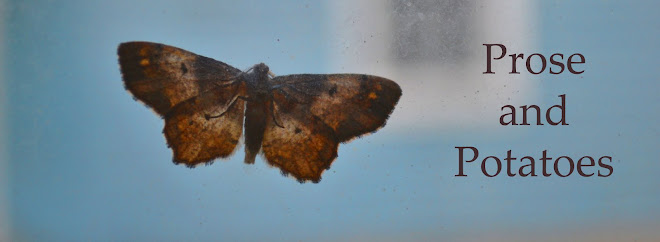Life has gotten more complicated than I would like. School started, and six weeks passed in a flurry of lesson plans, lecture notes, and term papers to grade. The last two days, I've been on fall break and recovering from a previous week of 90 individual student conferences and grading 90 essays, not to mention a week chock full of obligations: individual reading tutoring, gardening tending, and dinner making.
Now midterms are done. I look up and life has gone by fast. Too quickly to savor, too quickly to be calm, grounded, or centered. So swiftly, that it felt like I wasn't even present.
My bookshelf is littered with books like
The Simple Living Guide and
The 50 Best Ways to Simplify Your Life. Although I read them, and they do make a lot of sense, I have trouble executing a truly simple life. It's because I just want to DO so much. The piles of books to read, the piles of fabrics to sew, the piles of vegetables to cook sitting at the bottom of the fridge. How does it become too much so quickly?

Systematically weeding the categories of my life down to the essential seems to be the best way for me to balance. So lately, I've been thinking about the complexity and chaos of my kitchen. The piles of veggies get canned or frozen or turned into vegetable soups and eaten. But the urgency of it all is stressful. I have to remind myself that it is okay of some of those piles of veggies get turned into eggs. The chickens don't mind eating wilted, soggy-around-the-edges lettuce. I also remind myself that this vegetable anxiety is seasonal. This week is the last week we'll receive our CSA box for the year, so the stream of local veggies will ebb to a trickle. We haven't had a frost yet, so my garden is still producing, but as the days get shorter, it takes the tomatoes longer to ripen. I welcome the slower pace the winter will bring.
My other problem with kitchen complexity is in what I choose to cook in the first place. Somehow my cooking repertoire has revolved around the 2 hour, 20 ingredient recipe for far too long. Now I'm concentrating on simpler, easier recipes for awhile. I don't want to dabble in the occultish realm of recipes requiring frozen tater tots, Miracle Whip, and cream of mushroom soup though. Instead, I want to focus on quality ingredients (not too many) prepared in just a few simple steps.
The simplest dish that I make on a regular basis is mujadara. Mujadara came on my radar in two different places last winter. First, a local coffee shop served it on its lunch menu, and second, Orangette wrote about it
here. While I like the Orangette version just fine, I've simplified it even further. Rather than cook the onions, then the lentils, and then the rice, clocking in at about an hour and a half of attentive stove time, I cook it all at once in three separate pans. This dirties more dishes. (But like Kent says, my greatest talent is dirtying a large amount of dishes in a short amount of time.) The problem with cooking it all in one pot is that it becomes a finicky, nearly risotto like dish. And,
I have had issues with risotto trying my patience in the past.
I'm not going to give you a recipe here because you don't even need one. Cook a pot of basmati rice. Cook a pot of lentils. (You'll be fine following the directions on the packages of both.) And, then caramelize 3 or 4 large onions in olive oil. Mix all together and salt to taste.
Do not be deceived by the simplicity of this dish. With only 5 ingredients including salt and oil, it seems as if the flavor would be blah, but it's not. The secret is in the onions. Caramelized onions make this dish spectacular because they are the perfect fall flavor: rich and hearty but still sweet, with a calm mellowness. Sort of like the weather right now, sunny but punctuated by a chill in the air. The caramelized onions also play off of the other flavors here: the bright, slightly fruity, nuttiness of the basmati rice, and the deeper, earthier taste of the lentils.
Caramelized Onions
4 to 5 large onions, chopped
1 to 2 tablespoons olive oil
Chop onions and cook in oil over medium heat until they begin to brown. The goal is to brown them to a deep caramel color without burning them. So, if they start to brown too quickly, or blacken around the edges, you need to turn the heat down. Stir occasionally. Depending on the natural sugar level in your onions this could take anywhere from 20 to 45 minutes.
I have come to enjoy the soothing patience that these onions require. They don't need as much attention as a risotto, (I can still do dishes while caramelizing onions without disaster, which is important in my household!) I only have to focus on one pan, while the rice and lentils cook away on their own.
Here's the finished dish, which is great eaten hot, cold, or even at room temperature. The caramelized onions are incredibly versatile as well. They are great on sandwiches or tossed with pasta.











